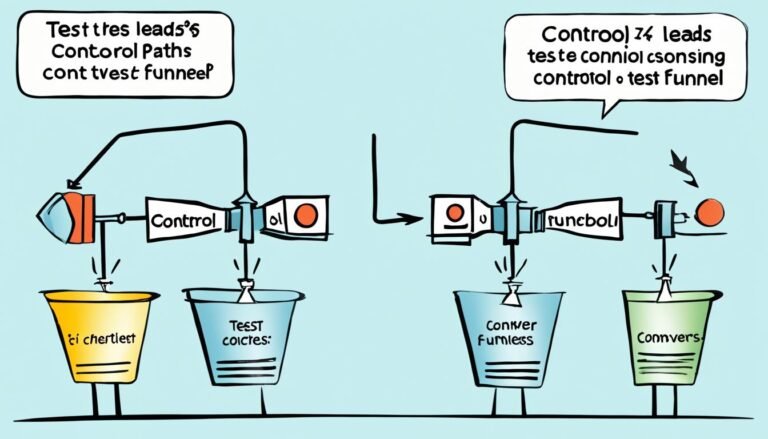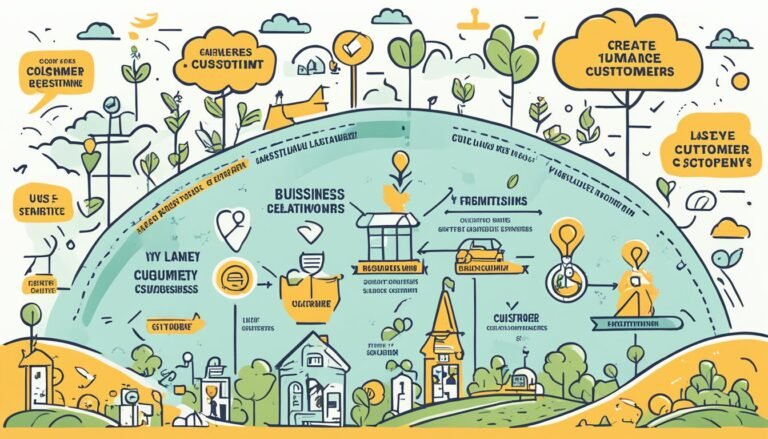Challenger Sale: Overcoming Objections and Creating Value
Are you finding it tough to close deals in today’s competitive sales world? The Challenger Sale approach might be just what you need. But what is the Challenger Sale, and how does it help you beat objections and add lasting value for your prospects?
Key Takeaways:
- The Challenger Sale approach emphasizes teaching, tailoring, and taking control of the sales conversation.
- Effective communication techniques include segmentation based on buyer personas, decision criteria, and communication style.
- Confident and assertive language can guide prospects towards the next steps in the sales process.
- Feedback and practice are crucial for improving sales techniques and overcoming objections.
- The Challenger Sale model can help you create continuous value throughout the sales cycle.
In this article, we’ll explore the Challenger Sale approach. We’ll see how it can empower you to beat objections, add value for your prospects, and close more deals in today’s competitive sales world. Get ready to challenge the status quo and become a true Challenger Sales professional.
Understanding the Challenger Sale Approach
The Challenger Sale approach focuses on sharing valuable insights and teaching prospects. It’s a new way to engage and convert customers, especially in complex sales. This method is becoming popular as a better way to connect with customers.
What is the Challenger Sale Approach?
A CEB study found 39% of top salespeople use the Challenger sales method. This method is great for complex sales but might not work well for simple ones. Some salespeople might need help adjusting to this method if they’re not naturally assertive or were trained differently.
The Three Key Elements: Teach, Tailor, and Control
The key parts of the Challenger Sale approach are:
- Teach your prospects something new and valuable. This helps you gain credibility, spark curiosity, and question their beliefs.
- Tailor your message to fit each prospect’s needs and likes. This shows you get their situation and have a solution that matters.
- Take Control of the conversation. Use confident language to push prospects forward, past any hesitation or doubt.
Mastering these elements lets sales pros use the Challenger Sale approach to succeed in complex sales.
“When making a purchase decision, business-to-business (B2B) buyers spend 5-6% of their time discussing the solution with one supplier. B2B buyers spend 27% of their decision-making time researching independently online.”
Teach Your Prospects with Valuable Insights
Learning the Challenger Sale method starts with deep Research on your prospect’s field, company, and job. This research helps you find key Insights that grab their attention and question their current beliefs. By sharing these insights, you show you know your stuff and make them curious about how your solution can solve their problems.
Conduct Thorough Research
Top Challenger sellers spend about 6 hours a week digging into their prospects to prove they’re credible. This Research uncovers trends, best practices, and case studies to teach and connect with prospects. Gartner says, the best sales reps often use a Challenger approach, showing its power in driving success.
Share Relevant Data and Case Studies
After researching, it’s time to share Data and Case Studies that challenge what your prospect thinks they know. These insights show how your solution can add value. By being a trusted advisor, guiding their choices, you boost your chances of making the sale.
“The Challenger sales methodology educates prospects, providing them with new information and perspectives to change their minds and behaviors.” – Gartner
Challenger Sale: Overcoming Objections and Creating Value
The Challenger Sale method is all about making your pitch fit each prospect’s needs. You need to know who they are, where they are in buying, what they care about, and how they like to talk. This way, you can make a message that speaks directly to them and meets their needs.
Tailor Your Message to Each Prospect
It’s key to adjust your words, tone, and examples to fit the prospect’s role and where they are in buying. For instance, a top executive might want big-picture strategies, while a tech expert will look at details like features and how they work.
Customizing your message shows you get what they’re going through and have a solution that fits. This can help you dodge common objections and show real value, leading to a sale.
Leverage Buyer Personas and Buying Stages
Using buyer personas and knowing the buying stages is vital for Challenger Sale. Personas help you spot key decision-makers and what they value. Knowing the stages lets you meet the prospect’s needs and worries with your words.
- Do deep research to grasp the prospect’s business, industry, and hurdles.
- Create detailed buyer personas to shape your approach.
- Make sure your message matches where the prospect is in the buying journey.
By making your pitch fit and using buyer personas and stages, you craft a sales experience that’s more personal and engaging. This approach helps you overcome objections and create value for the customer.
“The Challenger Sales model emphasizes the importance of tailoring sales messages to individual customers, understanding their specific problems, needs, and goals to create personalized messages that address those needs effectively.”
Take Control of the Sales Conversation
In the Challenger Sale approach, taking charge of the sales talk is key. You should use confident language instead of being passive. By asking trial closes and making small commitments, you check if the prospect is interested and ready to move forward.
Use Confident and Assertive Language
When talking to prospects, it’s vital to sound sure and strong. Don’t use language that shows doubt. Take Control of the talk by speaking clearly and confidently. This shows you know what you’re talking about and can lead the prospect to success.
Employ Trial Closes and Small Commitments
Use Trial Closes and Small Commitments during the sales process. These help you see how interested the prospect is and push the sale along. Asking for a follow-up meeting or more information keeps the prospect interested.
By taking charge and using these methods, you can overcome any obstacles and guide prospects to a sale.
“Challengers dominate complex sales scenarios, accounting for 50% of star performers, while Relationship Builders drop to nearly zero.”
Conclusion
The Challenger Sale approach is a strong way to beat objections and add value in sales talks. It teaches prospects new things, customizes your message for them, and takes charge of the conversation. This helps you become an expert, gain trust, and boost your chances of making a sale. It’s very useful in today’s competitive sales world, where buyers know a lot and are picky.
By using the Challenger Sale method, sales people can stand out, connect better with prospects, and achieve better results. This approach has been shown to improve sales and engage customers more in many industries. In fact, about 40% of top sales reps in complex sales use this method.
Using the Challenger Sales Model makes sales more effective, builds stronger customer relationships, and leads to more wins. Sales deals get bigger, and customers’ needs and goals are better met. As sales change, the Challenger Sale method gives sales pros an edge in beating objections and adding lasting value for their customers.
Source Links
- How do you overcome objections with the challenger sale approach?
- 3 Ways Value Selling Aligns with The Challenger Sale
- Challenger Sales Model: What It Is and Why It Matters
- Understanding the Challenger Sales Model for SaaS Businesses | Walnut
- Everything You Need to Know About Challenger Sale Model in 2024 | Alore
- 3 Ways the Challenger Sales Model Can Help You Close More Sales
- Master the Art of the Challenger Sales Methodology
- Challenger Sales Model Summary & Tips
- Challenger Sales Model: Process, Benefits & Implementation
- "The Challenger Sale" | Methodology + Book Review
- The Challenger Sales Method
- The Challenger Sale: Taking Control of the Customer Conversation Book Summary
- The Challenger Sale: Taking Control of the Customer Conversation
- The Challenger Sales Model: How to Master the Methodology
- What is Challenger Sales Methodology and How Will it Work for Your Business? – DemandFarm







